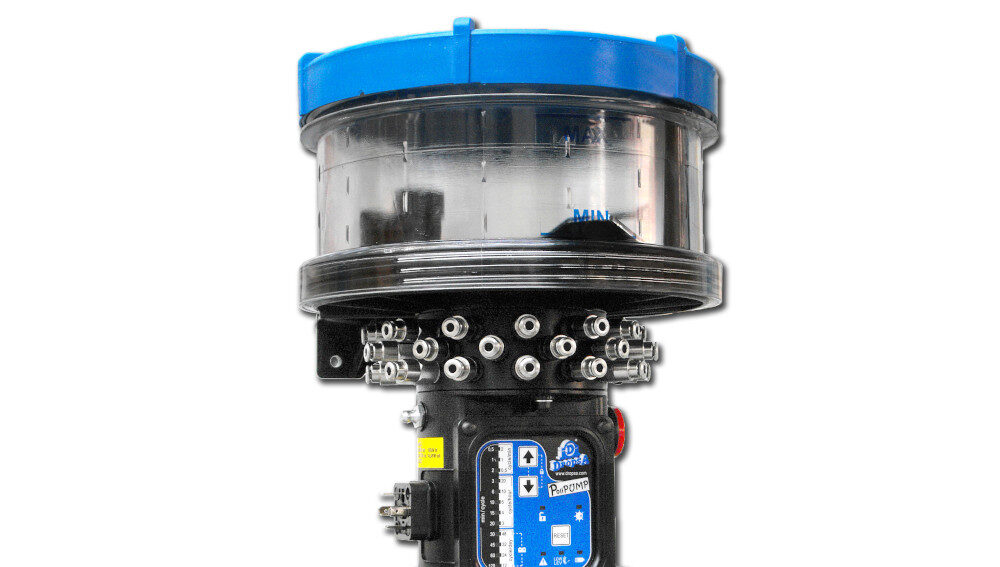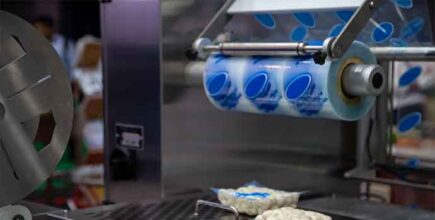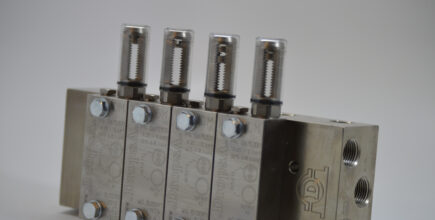
Multi-Line Systems
- Benefits of Multi-Line Lubrication Systems
- Acceptible Multi-Line Lubricants
- Questions About Multi-Line Lubrication Systems?
A multi-line lubrication system, sometimes called a multi-point lubrication system or multi-point lubricator, is a type of automatic lubrication system that can automatically disperse lubrication to several points (without a metering device) from a central unit. These systems are ideal for tunnel-boring equipment and excavators in mining and construction, heavy-industrial pumps, and other equipment that requires continuous lubrication.
Benefits
A multi-point lubrication system provides companies with several benefits. First, these systems are flexible, customizable, and precise—facilities that use them can set different lubrication cycles, settings, and volumes for each line and pump. Without this crucial feature, providing the right amount of lubrication to specific areas would be extremely costly, time-consuming, and labor-intensive. A closed system for each line allows companies to manage and monitor the right amount of lubricant for specific areas. Some multi-point lubricators are available with end-of-line control valves or metering devices if required by the application.
Multi-line lubrication systems are also simple, extremely accurate, repeatable, and reliable. They can be electrically, mechanically, or hydraulically operated, allowing companies to select unique lubrication conditions for different lines and outlets.
Lastly, these systems are critically important to the continued operation of heavy-duty equipment and machinery. Without proper lubrication, these systems risk encountering extended downtime alongside high maintenance and repair costs.
Overall Benefits:
- Durable: Multi-line systems are durable and can continuously operate in the harshest environments. Some systems even come with special explosion-proof certifications for heavy-duty and heavy-industrial applications.
- Adaptable & Precise: Companies can set different lubrication conditions and cycles by line. This extremely versatile function allows companies to target specific machinery and equipment areas requiring higher or lower doses of lubrication.
- High-Pressure Lubrication Over Long Distances: Multi-line systems can provide high-pressure lubrication over long distances to multiple access points or lubrication points. This ensures that machinery is always adequately lubricated, which extends the machinery’s service life while reducing its maintenance and repair costs.
Acceptable Lubricants
A multi-line lubrication system can operate with a broad viscosity range primarily due to its unique design and small piston clearances. This means multi-line systems can typically use organic, mineral, or synthetic oils, fluid grease, and semi-solid/solid grease (NLGI grade 1 to 3).
Whichever lubricant you use, ensure they are correctly classified and graded. Greases are classified by the National Lubricating Grease Institute (NLGI), while oils are classified by the International Standards Organization Viscosity Grade (ISO VG). NLGI classifies fluid greases as 000, 00, and 0 grades and non-fluid greases as 1, 2, 3, 4, 5, and 6. ISO VG classifies oil lubricants from 2 to 3200.
The configuration of a multi-line lubrication system will vary from manufacturer to manufacturer, so be sure to note the manufacturer’s lubricant recommendation for the specific system you are researching.
Do You Have Questions About Multi-Line Lubrication Systems?
Whether you need help selecting the right type of automatic lubrication system or lubricant, DropsA is here to help. Founded in 1946, we provide a wide range of automatic lubrication solutions to U.S. manufacturers in multiple industries and markets. As an ISO 9001-certified manufacturer and designer, we can also custom-engineer solutions based on your unique application.
Visit our online catalog to explore our products and solutions, or fill out our online form to speak with one of our experts.




